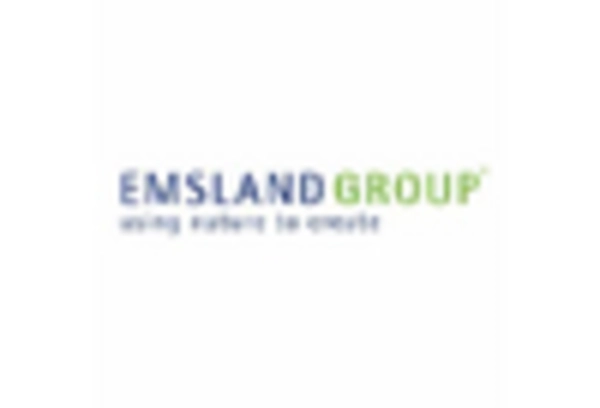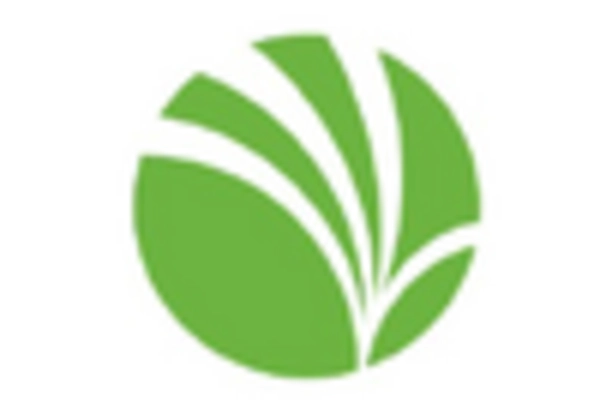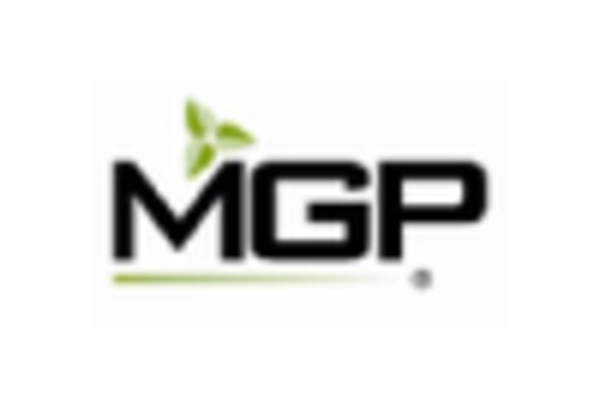Rising Demand for Functional Foods
The Potato Fiber Market experiences a notable increase in demand for functional foods, which are perceived as beneficial for health beyond basic nutrition. This trend is driven by consumers seeking products that support digestive health, weight management, and overall wellness. Potato fiber, rich in dietary fiber, aligns well with these consumer preferences, as it aids in promoting gut health and enhancing satiety. According to recent data, the functional food sector is projected to grow at a compound annual growth rate of approximately 8% over the next five years. This growth is likely to bolster the Potato Fiber Market, as manufacturers incorporate potato fiber into various food products to meet the evolving consumer expectations for health-oriented ingredients.
Increased Use in Gluten-Free Products
The Potato Fiber Market benefits from the rising popularity of gluten-free diets, which have gained traction among individuals with gluten sensitivities and those opting for gluten-free lifestyles. Potato fiber serves as an excellent ingredient in gluten-free formulations, providing texture and moisture retention in baked goods and snacks. The gluten-free market has shown remarkable growth, with estimates suggesting it could reach a valuation of over 7 billion in the coming years. This trend presents a significant opportunity for the Potato Fiber Market, as food manufacturers increasingly seek to enhance their gluten-free offerings with the inclusion of potato fiber, thereby catering to a broader consumer base.
Innovations in Food Processing Techniques
Advancements in food processing technologies are transforming the Potato Fiber Market by enabling the extraction and utilization of potato fiber in novel ways. Innovative techniques, such as enzymatic processing and high-pressure processing, enhance the quality and functionality of potato fiber, making it more appealing to food manufacturers. These innovations not only improve the nutritional profile of food products but also expand the applications of potato fiber in various sectors, including bakery, dairy, and meat alternatives. As the food industry continues to evolve, the Potato Fiber Market is likely to see increased adoption of these advanced processing methods, which could lead to a more diverse range of products featuring potato fiber.
Sustainability and Waste Reduction Efforts
The Potato Fiber Market is increasingly aligned with sustainability initiatives and waste reduction efforts within the food sector. As food manufacturers strive to minimize waste, potato by-products, including potato fiber, are being repurposed for use in various applications. This not only contributes to environmental sustainability but also provides a cost-effective solution for manufacturers. The emphasis on sustainable practices is becoming a key driver in the food industry, with many companies committing to reducing their carbon footprint and utilizing by-products efficiently. The Potato Fiber Market stands to benefit from this trend, as the demand for sustainable ingredients continues to rise, encouraging the incorporation of potato fiber into a wide array of food products.
Growing Awareness of Dietary Fiber Benefits
The Potato Fiber Market is positively influenced by the growing awareness among consumers regarding the health benefits associated with dietary fiber. As more individuals recognize the importance of fiber in maintaining digestive health and preventing chronic diseases, the demand for fiber-rich products is on the rise. Potato fiber, being a soluble fiber, offers unique health benefits, including improved gut microbiota and enhanced nutrient absorption. Market Research Future indicates that the dietary fiber market is expected to witness substantial growth, with projections estimating a CAGR of around 7% over the next several years. This heightened awareness is likely to drive the Potato Fiber Market as consumers increasingly seek out products that contribute to their overall health and well-being.


















Leave a Comment